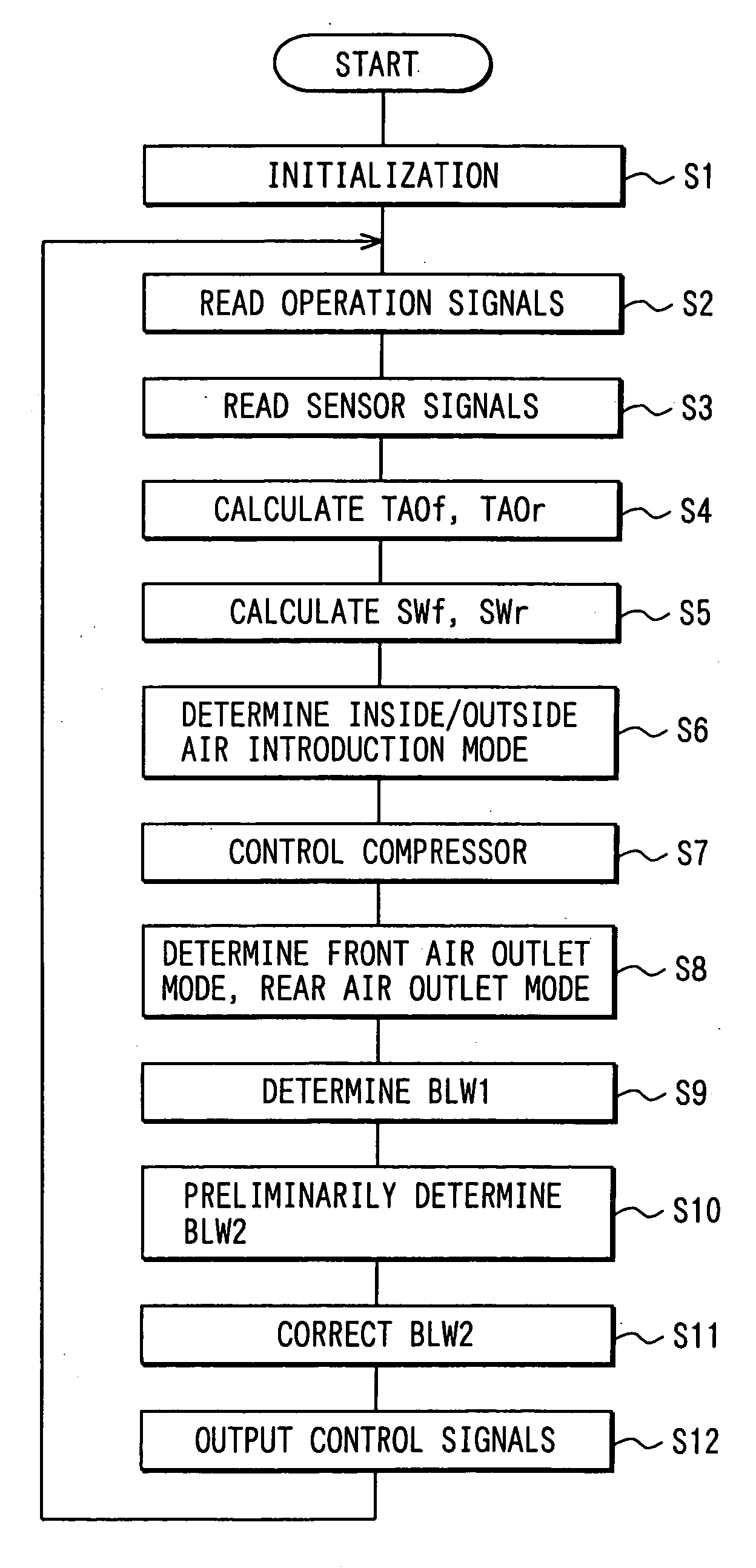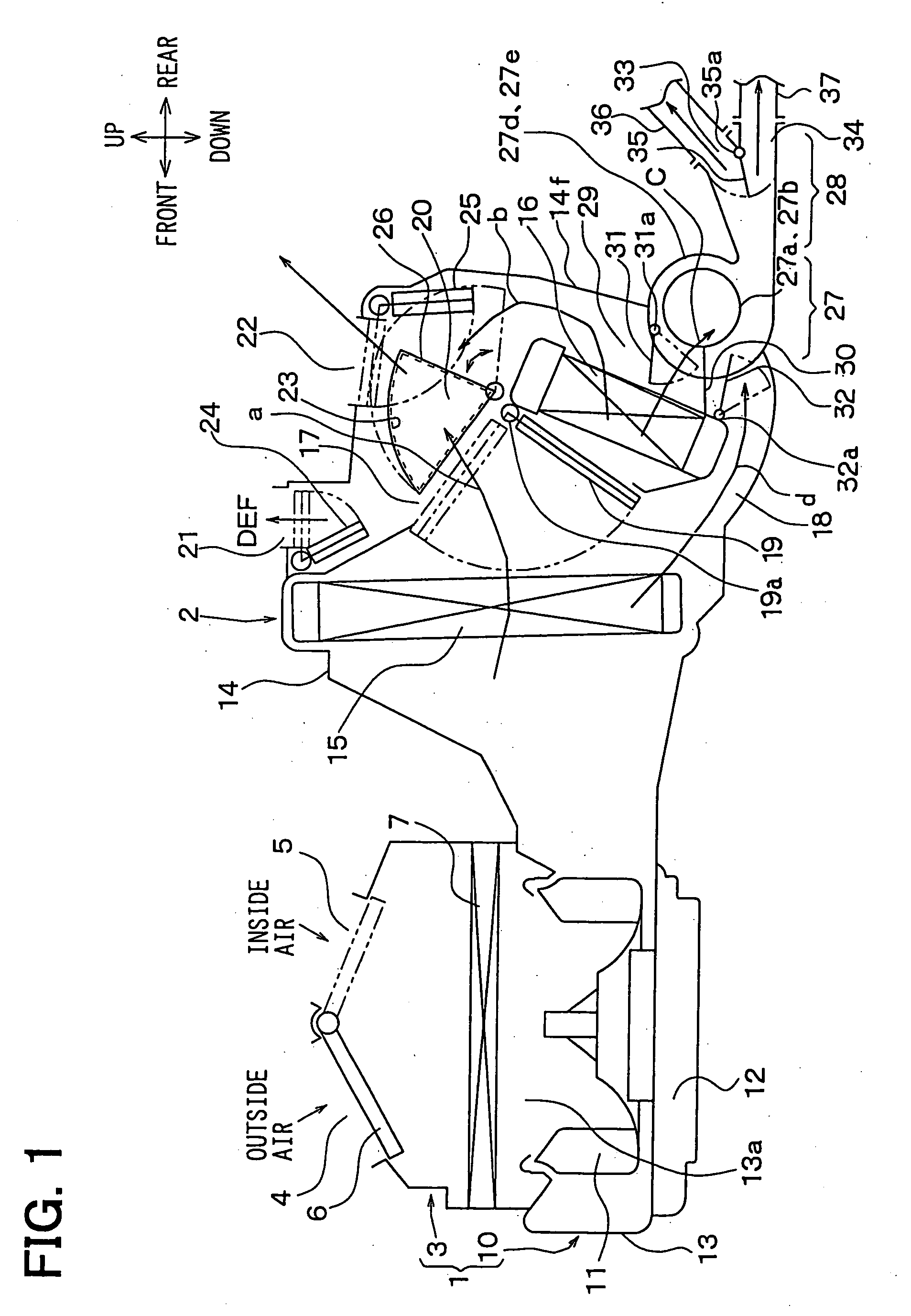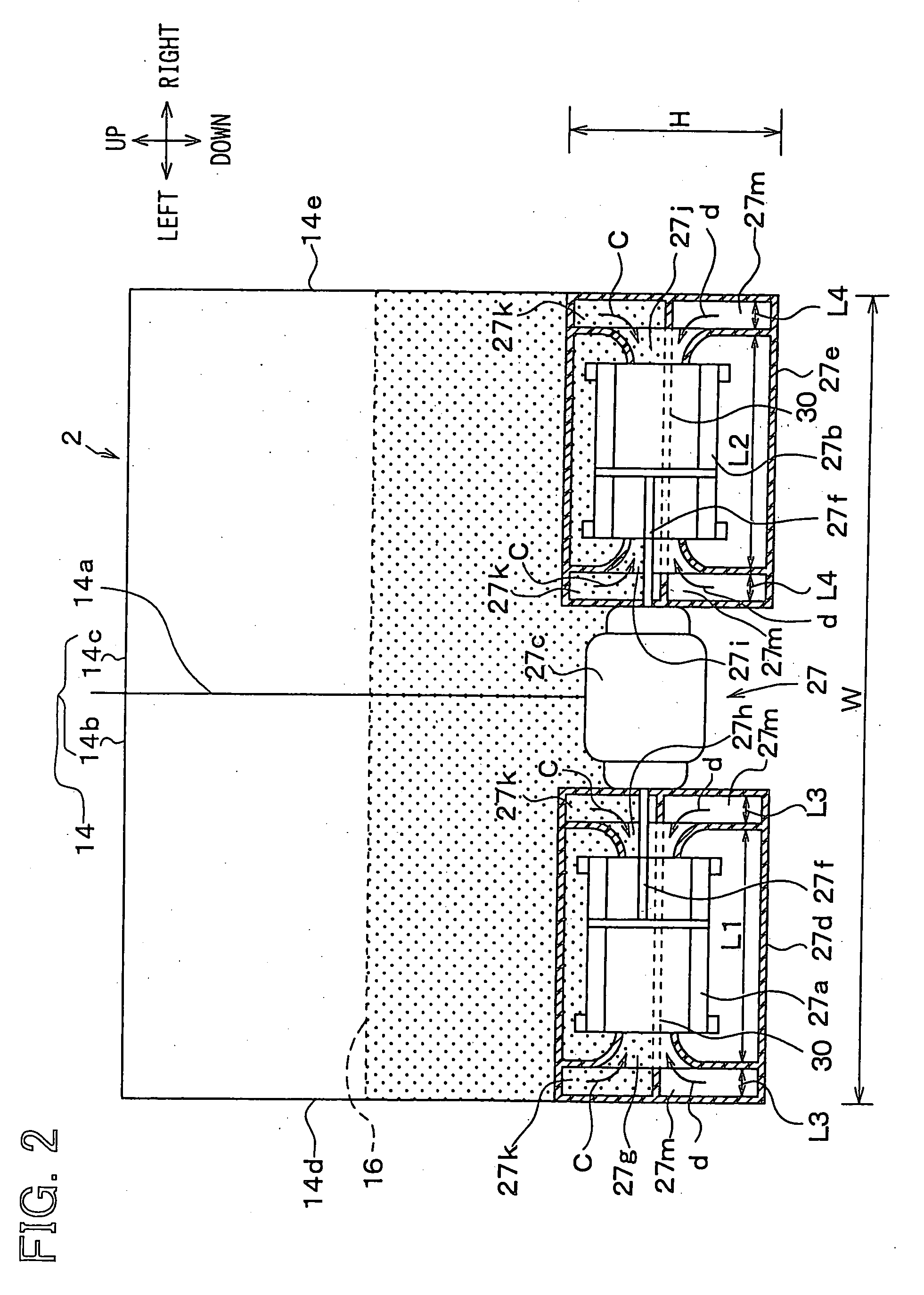Vehicle air conditioner with automatic control of main blower and sub-blower
a technology of air conditioner and sub-blower, which is applied in the direction of heating types, vessel parts, domestic cooling apparatus, etc., can solve the problems of air blown to the rear lower side not being able to adjust the temperature, the air amount blown to the rear upper side becoming smaller, and the effect of heating shortag
- Summary
- Abstract
- Description
- Claims
- Application Information
AI Technical Summary
Benefits of technology
Problems solved by technology
Method used
Image
Examples
Embodiment Construction
[0023] A preferred embodiment of the present invention will be described with reference to the accompanying drawings.
[0024] An interior air conditioning device shown in FIG. 1 is broadly constructed of a blower unit 1 and a heat exchange unit 2. In FIG. 1 and FIG. 2, arrows showing "up and down", "front and rear", and "left and right" indicate directions in a state where the heat exchange unit 2 is mounted in a vehicle, respectively. In FIG. 1, for convenience of preparing a drawing, the blower unit 1 is arranged on the front side of the vehicle of the heat exchange unit 2, but in reality, the blower unit 1 is arranged at an offset position in the lateral direction (i.e., right-left direction) of the vehicle of the heat exchange unit 2. That is, the heat exchange unit 2 is arranged nearly at the center in the lateral direction of the vehicle inside an instrument panel (i.e., dashboard) in the passenger compartment. The blower unit 1 is arranged to be offset to a front passenger's se...
PUM
 Login to View More
Login to View More Abstract
Description
Claims
Application Information
 Login to View More
Login to View More - R&D
- Intellectual Property
- Life Sciences
- Materials
- Tech Scout
- Unparalleled Data Quality
- Higher Quality Content
- 60% Fewer Hallucinations
Browse by: Latest US Patents, China's latest patents, Technical Efficacy Thesaurus, Application Domain, Technology Topic, Popular Technical Reports.
© 2025 PatSnap. All rights reserved.Legal|Privacy policy|Modern Slavery Act Transparency Statement|Sitemap|About US| Contact US: help@patsnap.com



